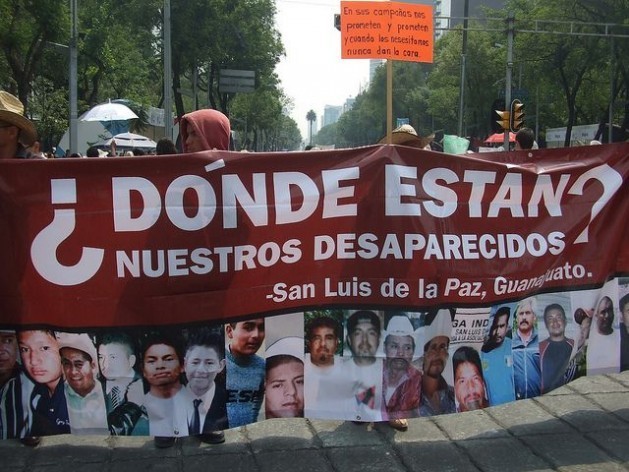by Fernando A. Torres
Three years after the historic protests of thousands of people, mostly residents of the Mission District in San Francisco, against displacement and evictions, the city and community organizations are finalizing a joint strategy: the Action Plan for the Mission 2020 (MAP2020).
In an informative meeting at the Women’s Building on Wednesday, more than 200 residents, leaders and city officials gave their opinions and suggestions to update the plan known as MAP2020, version that will be presented to the Board of Supervisors for approval.
In a story plagued by conflicts between the city and low-income communities, the plan is far-reaching. What in 2015 could have been a pitched battle, today was a nice working meeting between municipal officials, leaders and neighbors of the neighborhood.
The housing crisis, fueled by a housing deficit and the mass arrival of workers in the so-called Silicon Valley with high purchasing power, caused evictions and displacements to levels never before seen. The crisis has generated large demographic and social displacements of historical communities that are threatening the very culture of the city. San Francisco is becoming a city for the rich, it was one of the slogans in the dozens of protests that came.
“This really started when the community went to City Hall. We were like 800. There (the politicians) knew that the community was seriously asking for something to be done. This is the result of all that.” Thus, Erick Arguello recalled the beginning of a day of protests that took thousands of people out of the neighborhood and took them to City Hall himself.
Today the city is putting its resources and talking with the community. “The city is behaving like a good partner in this process. We have been working with them for several years and have been quite receptive to the needs of the community, “said Arguello, President of the 24th Street Latino Cultural District, in a more reflective tone.
Contrary to other meetings, this time the meeting was friendly and direct to the important points. The meeting was divided by themes and papers were put on the walls where neighbors wrote their opinions and suggestions. Next to each topic was a city official or a community leader talking to neighbors.
The plan seeks to stop the evictions and maintain the socio-cultural characteristics of the Mission through a detailed plan that includes stopping the exodus of families to other cities through the construction of affordable housing and maintaining jobs in the neighborhood as small businesses and the artistic workshops.
But some think that the popular neighborhood of the Mission suffered irreversible damage, so deep that no plan will be sufficient, that it is only to alleviate the damage suffered. “We are achieving things, but it is not enough, (not equal) to how aggressive the displacement was in the Mission. We are just remedying things, we are not even going back to the original situation. It’s going to take a while for it to stabilize, “said Dairo Romero of the Mission Economic Development Agency (MEDA).
Since 2000, according to MEDA, 8,000 Latinos have been forced to leave their homes. The Mission, which has always been a place of support for immigrant and low-income Latinos, “is today one of the most inaccessible neighborhoods in the country.” Small businesses, spaces for art, for the community and small industry, have closed because the contract renewal has doubled or tripled the cost of the lease.
According to Claudia Flores, a worker in the Urban Planning Department of the city, the problem also generates a crisis in the economic aspect. “We are losing the working class and this is important for the economic health of the city. That a worker has to come from Stockton or that teachers have to live so far is not sustainable. It will not be a magical solution to stop the evictions. We are committed to do what we can, “said Flores, who was also the moderator of the meeting.
Romero said that progress has been made and cited as an example the 780 units of affordable housing for the elderly and low-income families. “We have been trying for two years to get it out and finally this year they are going to start building”. In order to grant housing, the city will carry out a lottery. “We want many people to know to apply for the lottery,” exclaimed Romero.
At the meeting some showed a mixture of skepticism and optimism at the same time. Such was the case of Carlos Solórzano who recalled that 10 years ago a similar process was experienced and “nothing happened”. Solórzano, who is president of the Hispanic Chambers of Commerce of San Francisco, said that there is now a difference because it has the participation of other organizations such as Calle 24, the Chamber of Commerce and the Association of Merchants of the Mission.
However, Solorzano warned that the current traffic plan in the neighborhood is restrictive for the normal activity of the neighborhood. Following this, many small businesses are closing. The red areas for buses and taxis and the restrictions to turn to the right or to the left do that the clients can not park or transit expeditiously.
“If you come to la Misión, to your favorite restaurant that is on Calle 24 and when you get to César Chávez avenue you are forced to turn right then you have turned around, you can not find parking, then you go from the neighborhood to another part,“ Solórzano asserted.
More information about the MAP2020 Plan can be found on the San Francisco City Planning Department website: http://sf-planning.org/MISSION-ACTION-PLAN-2020.-PLAN-2020.








